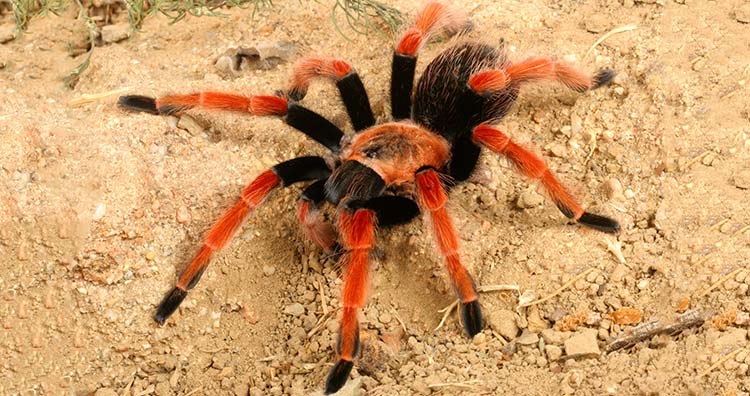10 of the Biggest Spiders in the World
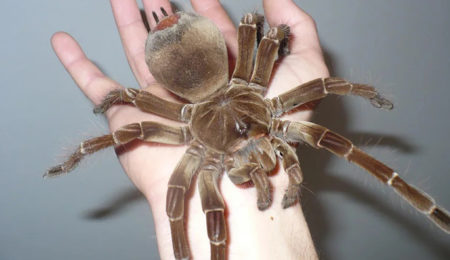
Spiders are often associated with feelings of fear and anxiety (arachnophobia, anyone?). Sadly, this means that we sometimes ignore their ecological benefits. For instance, various species of spiders hunt insects and other creatures that can be harmful to humans. At the same time, these animals also carry wonderful patterns on their bodies that reflect the true beauty of nature. So, if you’re someone who loves reading about all kinds of eight-legged beings, here are ten of the biggest spiders in the world.
1 Mexican Fireleg Tarantula: Five to Six Inches
Commonly known as the Mexican fireleg or rustleg tarantula, these spiders are long-living creatures that reach maturity between their seventh and tenth years of life. They are also some of the biggest spiders on the planet, with sizes ranging from five to six inches (12 to 15 centimeters).
The New World, comprising most of the Western Hemisphere, is home to numerous animals. Among them, the Mexican fireleg tarantula (scientifically called Brachypelma boehmei), is a relatively well-known species. However, to the untrained eye, these critters may also look like their relative, the Mexican redknee tarantula.
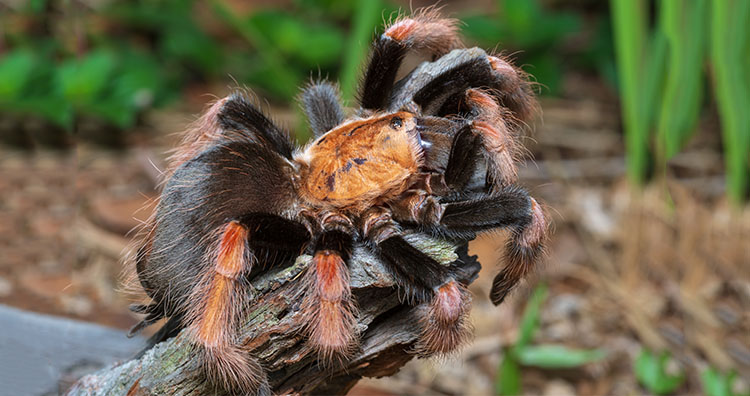
These little beasts are found in southern Mexico, where they prefer to be in the dry scrublands. There, they can be found living in burrows that are either self-made or made by other animals and later abandoned and claimed by the spiders.
Due to their large sizes, these arachnids prefer to hunt down their prey rather than spin webs to trap them. Furthermore, like many other tarantulas, these spiders also tend to flick their hairs (known as urticating hairs) when threatened, causing irritation and discomfort to their predators. But despite these factors, these spiders are also one of the most commonly found species among pet arachnids. (1, 2)
2 Brazilian Wandering Spider: Six Inches
These large spiders, with a leg span of up to six or seven inches (15-18 centimeters), have been found hidden inside imported fruit crates from Central and South America. They are also known for standing their ground when threatened, unlike most spiders that prefer to run and hide.
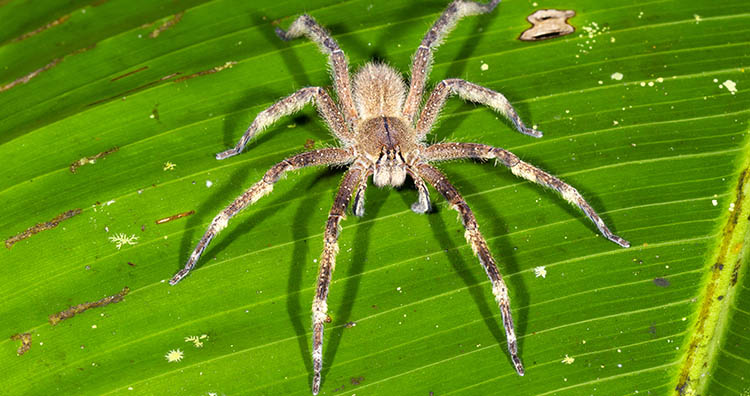
The Brazilian wandering spider is the common name of the genus Phoneutria, meaning “murderess” in Greek. And as its name suggests, this genus contains some of the most venomous spiders in the world.

For humans, their venom can be lethal, especially to children. However, these spiders may choose to deliver dry bites (without venom) or inject low levels of venom, causing reactions of varying severities. Fortunately, due to the availability of antivenom, deaths from their bites are not that common.
More importantly, these spiders have a reputation for “wandering” about not just in their habitats, but also around the globe. In 2014, a family in London discovered this nightmare of a spider inside their grocery delivery. It had likely ended up there after being imported from Central or South America where they are found.
However, it’s worth noting that some spiders found this way may also just be harmless banana spiders misidentified as Brazilian wandering spiders. (1, 2)
3 Colombian Giant Redleg: Six to Eight Inches
The Colombian giant redleg spider is a type of tarantula found in the rain forests of Colombia and Brazil. These beasts can grow as big as six to eight inches in leg span, making them some of the biggest spiders in the world.
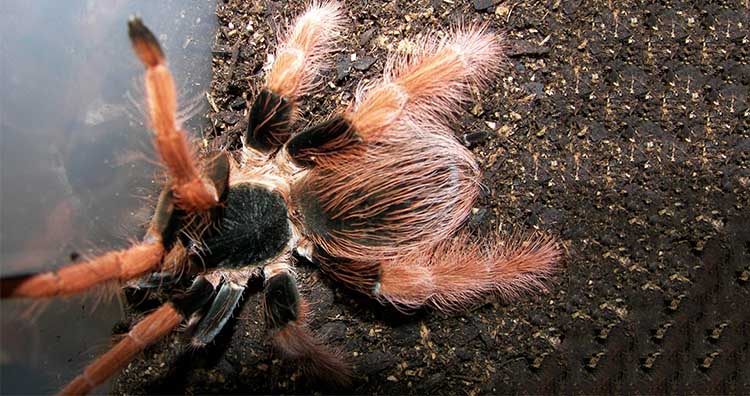
Megaphobema robustum, more commonly known as the Colombian giant redleg spider, is a species of fairly quick growers. The males can reach maturity in just three to five years, while the females can grow as old as 15 years.
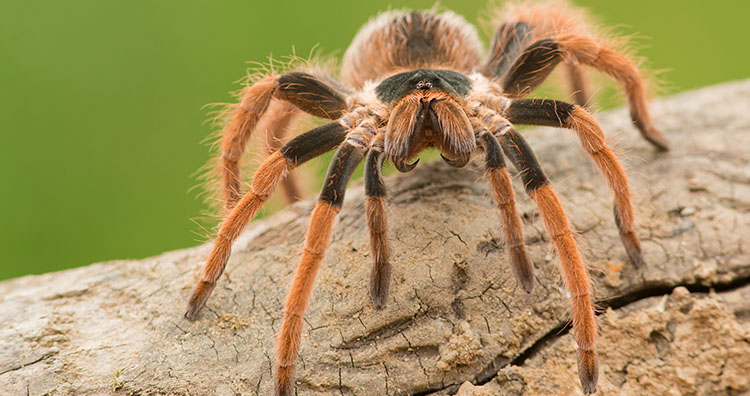
These “eye-candy†spiders are predominantly found in the rain forests of Colombia and Brazil. However, it is also not uncommon to find them inside pet stores and in specialized cages in people’s homes. Unfortunately, these arachnids may not be the best fit for spider-lovers who enjoy handling their pets because of their unusual defense mechanism.
When threatened, many tarantula species lift their front legs to appear bigger and more menacing. However, when a Colombian giant redleg perceives a threat, it tends to turn around and kick its back legs, flicking urticating hairs around.
Thankfully, these critters are not known to have medically significant venom. Their bites are said to be only as potent as a bee sting. (1, 2, 3)
4 Peacock Tarantula: Six to Eight Inches
Considered a critically endangered species, the peacock tarantula is easily identified by its unique blue color. When full-sized, these animals can measure up to six to eight inches (15 to 20 centimeters) in leg span.
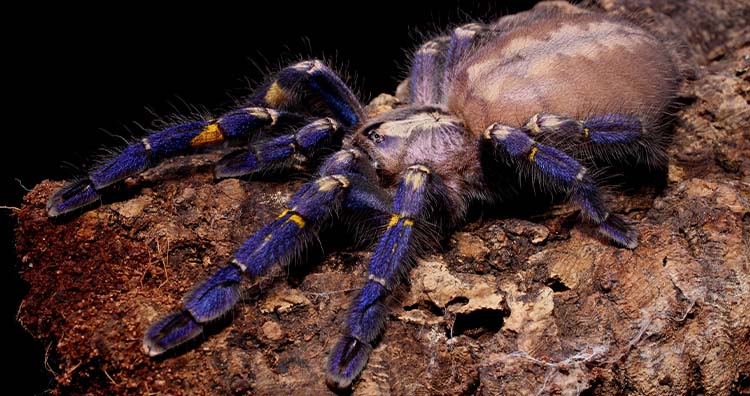
Aptly named “peacock tarantula,†the Poecilotheria metallica is certainly one of a kind. But despite being the only blue-colored critter in its genus, it also shares some characteristics with its relatives. For example, the intricate fractal-like patterns on its abdomen are exhibited by other Poecilotheria members as well.
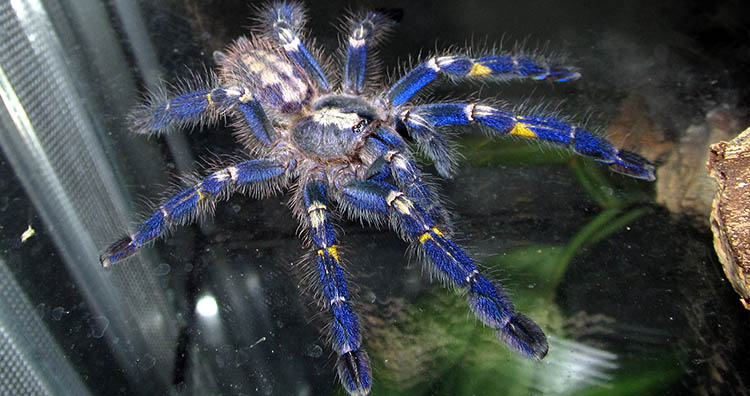
Interestingly, this unusually metallic blue spider actually starts out as less chromatic than its adults. Then, as it matures, the blue hues become more prominent. Also, once fully grown, these spiders can have fairly long life spans.
Of course, like many tarantulas, these arachnids are also popular pets among spider enthusiasts. However, they do pose some danger to humans due to their medically significant venom. Luckily for us, the vast majority of their bites are said to be dry bites.
Sadly, this spider is a victim of increasing habitat loss due to logging activities in the deciduous forests of Andhra Pradesh, India where it resides. As a result, it is considered a critically endangered species. (1, 2)
5 Wessel’s Tiger Ornamental: Seven to Eight Inches
This species is primarily found in the Eastern Ghats of India, with the female growing as big as eight inches. The males, however, are smaller and grow up to only seven inches.
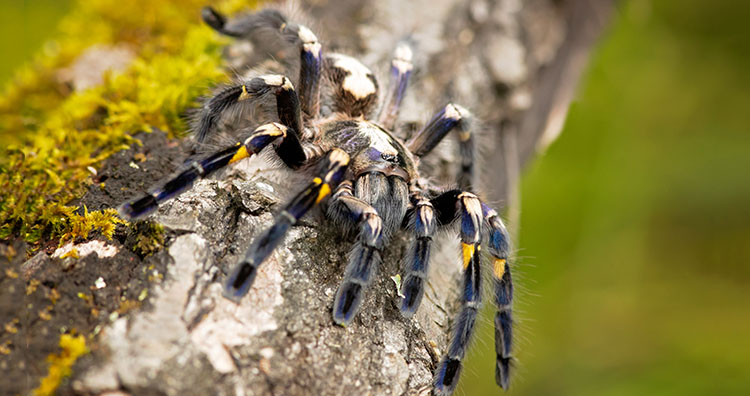
Being an arboreal species, the Wessel’s tiger ornamental spider (Poecilotheria tigrinawesseli) prefers to reside in the hollows of trees, under tree barks, or in rock crevices. The female spiders of this species can reach up to eight inches (20 centimeters) in size. The males, in contrast, are more likely to be around seven inches (18 centimeters).
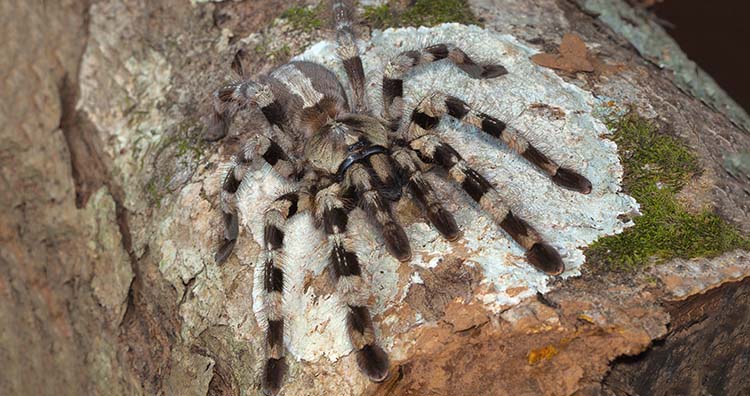
Luckily, for all arachnophobes out there, these fairly large spiders are not commonly found in human habitations. But if someone does go backpacking through the Eastern Ghats of India, they are highly likely to have a chance encounter with these critters.
However, spider-lover or not, there’s no denying the beauty these creatures present. Their wonderful patterns of daffodil-yellow base colors, offset by bands of black on their legs, are a true testament to this fact.
Unfortunately, there is very little information available on these spiders or their population numbers. Consequently, the International Union for Conservation of Nature (IUCN) has marked it as a “data deficient†species. (source)
10 Rediscovered Species That Were Earlier Thought to Be Extinct














